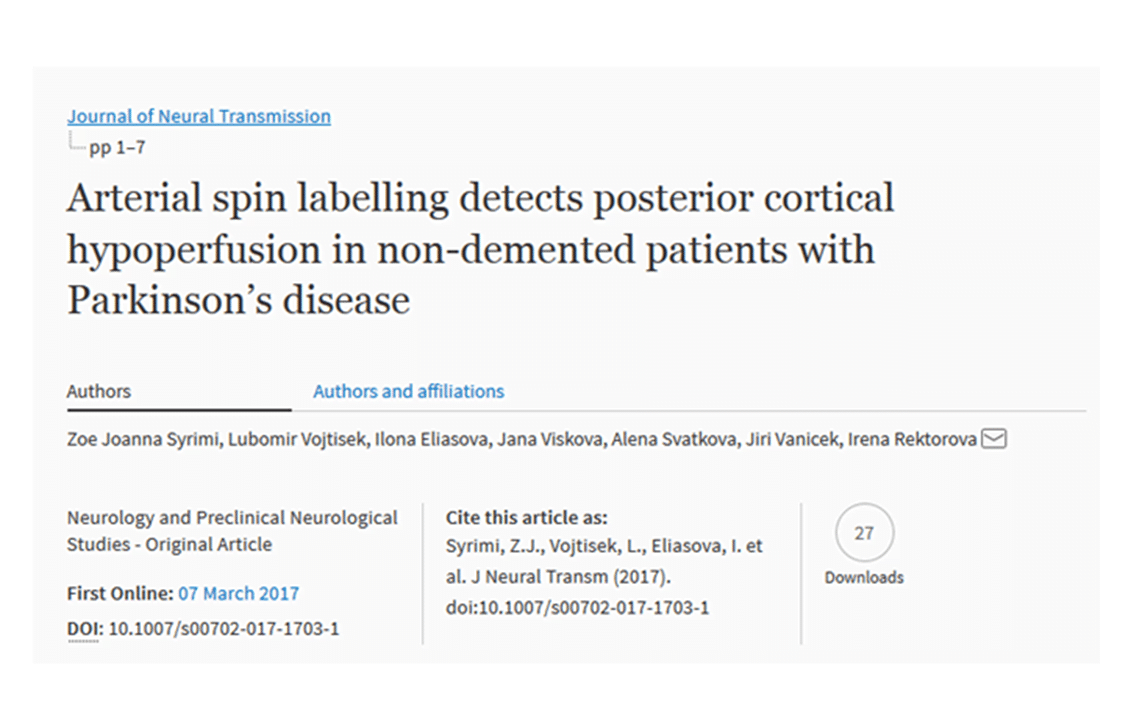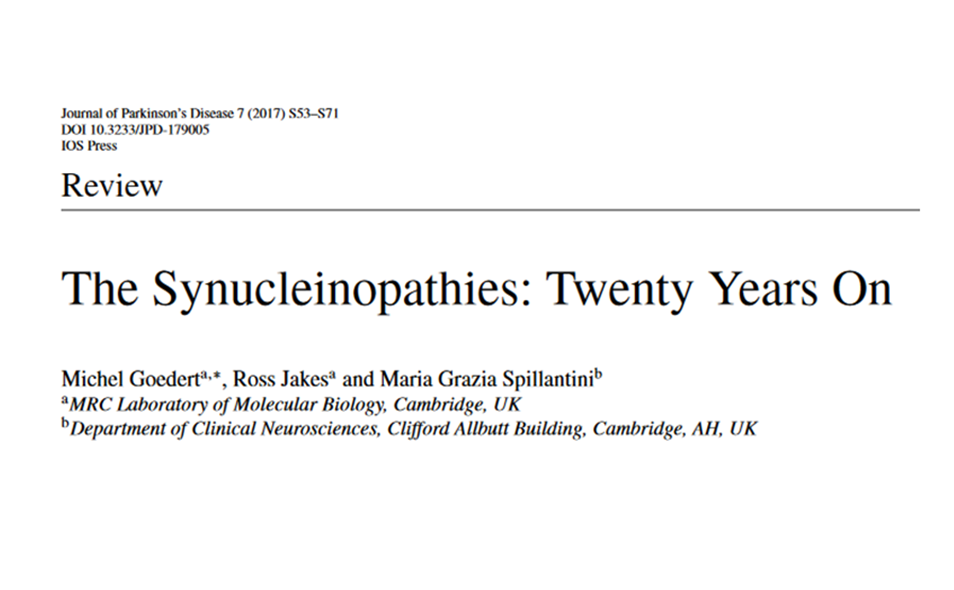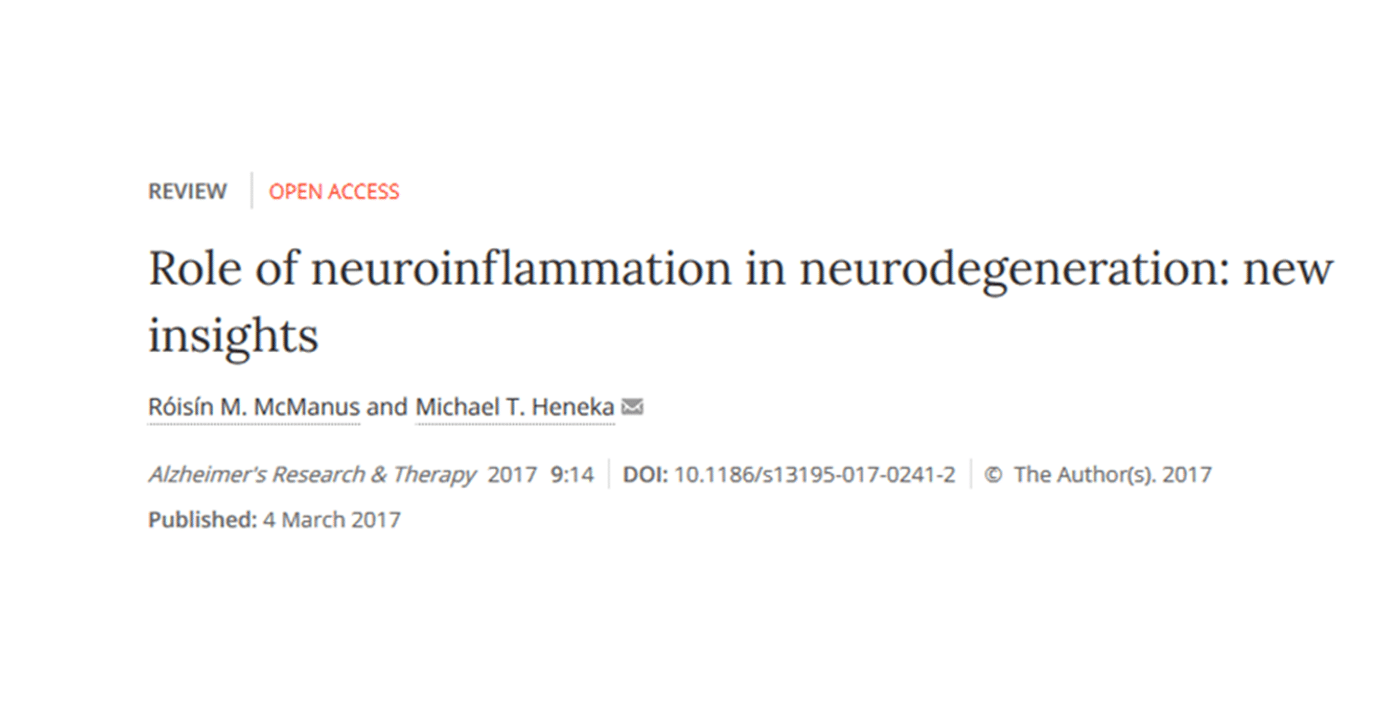 “Arterial spin labelling detects posterior cortical hypoperfusion in non-demented patients with Parkinson’s disease” has been published in the Journal of Neural Transmission. This work was supported in part by JPND through the APGeM project, selected in the 2012 risk factors call.
“Arterial spin labelling detects posterior cortical hypoperfusion in non-demented patients with Parkinson’s disease” has been published in the Journal of Neural Transmission. This work was supported in part by JPND through the APGeM project, selected in the 2012 risk factors call.
Yearly Archives: 2017
For the first time, researchers have found higher levels of Gram-negative bacteria antigens in brain samples from late-onset Alzheimer’s disease patients. Compared to controls, patients with Alzheimer’s had much higher levels of lipopolysaccharide (LPS) and E coli K99 pili protein. In addition, the researchers also found LPS molecules congregated with amyloid plaques, which have been linked to Alzheimer’s pathology and progression. The research was published in Neurology.
Researchers have not yet determined if the bacteria are causing Alzheimer’s disease or a consequence of it.
Many Gram-negative bacteria are pathogenic, including E. coli, Helicobacter pylori, salmonella, Chlamydophila pneumoniae and Shigella. Researchers have known for some time that infections can increase the risk of Alzheimer’s; however, this is the first time anyone has found increased levels of Gram-negative bacteria antigens in Alzheimer’s disease brains and bacterial molecules associated with the disease pathology. This research follows previous animal studies that showed bacterial LPS plus ischemia/hypoxia can increase amyloid β and produce amyloid plaque-like aggregates.
The study compared 24 gray and white matter samples from patients with the disease – using Consortium to Establish a Registry for Alzheimer’s disease criteria – with 18 samples from people who had shown no evidence of cognitive decline. While LPS and K99 were found in both groups, the prevalence was much higher in the Alzheimer’s patients. K99 was found in nine of 13 Alzheimer’s gray-matter samples compared to one of 10 controls by Western blot analysis. Increased K99 levels were also found in Alzheimer’s disease white matter samples. The story was similar with LPS, which was found in all six samples (three gray and three white matter) but not in the controls by Western blot analysis.
The researchers spent four years validating these results before publishing. In particular, they were concerned about contaminated samples, as LPS is commonly found in many reagents. However, the differentials between the Alzheimer’s disease samples and controls and the unique localizations of the molecules in Alzheimer’s brains seem to indicate the team avoided this pitfall.
These findings highlight the need to further investigate how infectious agents impact Alzheimer’s. While discovering LPS and K99 in Alzheimer’s disease brain samples is a good start, researchers must study the role bacteria may play in the disease pathology. A proven link between bacterial infections and Alzheimer’s could offer new opportunities to prevent and treat the disease.
Paper: “Gram-negative bacterial molecules associate with Alzheimer disease pathology”
Reprinted from materials provided by the UC Davis MIND Institute.
 “The Synucleinopathies: Twenty Years On” has been published in the Journal of Parkinson’s Disease. This work was supported in part by JPND through the REfrAME project, selected in the 2015 JPco-fuND call.
“The Synucleinopathies: Twenty Years On” has been published in the Journal of Parkinson’s Disease. This work was supported in part by JPND through the REfrAME project, selected in the 2015 JPco-fuND call.
Although the hallmark symptoms of Parkinson’s disease (PD) – such as involuntary shaking, slowness of movement and muscle rigidity – are related to movement, recent evidence has suggested that memory impairment plays an outsized role in diminished quality of life and the burden placed on caregivers.
A new study finds that mutations in the gene for glucocerebrosidase (GBA), known to be a risk factor for PD, also have a powerful influence on the development of cognitive decline. The study was published in Annals of Neurology, the journal of the American Neurological Association.
Two defective copies of the GBA gene are known to cause Gaucher’s disease, a childhood disorder that causes death by age two or severe neurologic complications. One defective copy of the gene was once thought to be of little consequence, but has recently emerged as a common risk factor for Parkinson’s disease.
The new report examined 2,304 patients from the US, Canada and Europe, finding that 10 percent carried one (or more) defects in copies of the GBA gene. Patients carrying one defective GBA gene copy had an increased risk of memory troubles. This effect was most troublesome for patients carrying a GBA copy with the most severe type of defect — known as a neuropathic GBA mutation — whose risk of developing cognitive decline over time was increased by 217 percent. Approximately half of the carriers of a neuropathic GBA mutation developed global cognitive impairment within ten years of being diagnosed with Parkinson’s. Among the PD patients without a mutation, only about 20 percent developed this decline in cognitive function.
Therapies for Gaucher disease have been available since 1994. The researchers hope that their findings will open the door for a completely new type of clinical trials in Parkinson’s — GBA-directed trials designed to proactively prevent memory troubles in patients with movement-related symptoms.
Paper: “Specifically neuropathic Gaucher’s mutations accelerate cognitive decline in Parkinson’s”
Reprinted from materials provided by Brigham and Women’s Hospital.
Using LED lights flickering at a specific frequency, researchers have shown that they can substantially reduce the beta amyloid plaques seen in Alzheimer’s disease, in the visual cortex of mice.
This treatment appears to work by inducing brain waves known as gamma oscillations, which the researchers discovered help the brain suppress beta amyloid production and invigorate cells responsible for destroying the plaques.
Further research will be needed to determine if a similar approach could help Alzheimer’s patients, the researchers say. The study was published in Nature.
In a study of mice that were genetically programmed to develop Alzheimer’s but did not yet show any plaque accumulation or behavioral symptoms, the researchers found impaired gamma oscillations during patterns of activity that are essential for learning and memory while running a maze.
Next, the researchers stimulated gamma oscillations at 40 hertz in a brain region called the hippocampus, which is critical in memory formation and retrieval. These initial studies relied on a technique known as optogenetics, co-pioneered by Boyden, which allows scientists to control the activity of genetically modified neurons by shining light on them. Using this approach, the researchers stimulated certain brain cells known as interneurons, which then synchronize the gamma activity of excitatory neurons.
The researchers then began to wonder if less-invasive techniques might achieve the same effect. They came up with the idea of using an external stimulus — in this case, light — to drive gamma oscillations in the brain. The researchers built a simple device consisting of a strip of LEDs that can be programmed to flicker at different frequencies.
Using this device, the researchers found that an hour of exposure to light flickering at 40 hertz enhanced gamma oscillations and reduced beta amyloid levels by half in the visual cortex of mice in the very early stages of Alzheimer’s. However, the proteins returned to their original levels within 24 hours.
The researchers then investigated whether a longer course of treatment could reduce amyloid plaques in mice with more advanced accumulation of amyloid plaques. After treating the mice for an hour a day for seven days, both plaques and free-floating amyloid were markedly reduced. The researchers are now trying to determine how long these effects last.
Furthermore, the researchers found that gamma rhythms also reduced another hallmark of Alzheimer’s disease: the abnormally modified Tau protein, which can form tangles in the brain.
The researchers are now studying whether light can drive gamma oscillations in brain regions beyond the visual cortex, and preliminary data suggest that this is possible. They are also investigating whether the reduction in amyloid plaques has any effects on the behavioral symptoms of their Alzheimer’s mouse models, and whether this technique could affect other neurological disorders that involve impaired gamma oscillations.
Paper: “Gamma frequency entrainment attenuates amyloid load and modifies microglia”
Reprinted from materials provided by MIT.
 “Striato-cortical connections in Parkinson’s and Alzheimer’s diseases: Relation to cognition” has been published in Movement Disorders. This work was supported in part by JPND through the APGeM project, selected in the 2012 risk factors call.
“Striato-cortical connections in Parkinson’s and Alzheimer’s diseases: Relation to cognition” has been published in Movement Disorders. This work was supported in part by JPND through the APGeM project, selected in the 2012 risk factors call.
A fault with the natural waste disposal system that helps to keep our brain cell ‘batteries’ healthy may contribute to neurodegenerative disease, a new study has found.
The research, published in the journal Cell Death and Disease, centres on problems with mitochondria — the powerhouses that produce energy within a cell.
The results support previous evidence that patients with Parkinson’s disease have faults with brain mitochondria, contributing to dysfunction and death within their neurons.
Faults in this system may play an important role in neurodegenerative diseases such as Parkinson’s and Alzheimer’s because they are caused by the death of neurons — the network through which we transfer information in our brain.
Using gene targeting in mice, the researchers have discovered that a faulty UPS in neurons leads to damaged mitochondria that produce less energy. Damaged mitochondria are also known to produce harmful molecules that injure the cell — oxidative stress — so it is vital that the brain is able to keep mending, removing and replacing them.
The study also found that when the UPS was faulty, the damaged mitochondria were not removed from neurons in the normal way by the process of autophagy, the disposal system that breaks down larger parts in the cell like mitochondria.
Paper: “Continued 26S proteasome dysfunction in mouse brain cortical neurons impairs autophagy and the Keap1-Nrf2 oxidative defence pathway”
Reprinted from materials provided by the University of Nottingham.
 “Role of neuroinflammation in neurodegeneration: new insights” has been published in Alzheimer’s Research & Therapy. This work was supported in part by JPND through the InCure project, selected in the 2013 cross-disease analysis call.
“Role of neuroinflammation in neurodegeneration: new insights” has been published in Alzheimer’s Research & Therapy. This work was supported in part by JPND through the InCure project, selected in the 2013 cross-disease analysis call.
 “Reporting on methods to generate and purify rodent and human oligodendrocytes from different sources” has been published in Stem Cell Research. This work was supported in part by JPND through the MADGIC project, selected in the 2015 JPco-fuND call.
“Reporting on methods to generate and purify rodent and human oligodendrocytes from different sources” has been published in Stem Cell Research. This work was supported in part by JPND through the MADGIC project, selected in the 2015 JPco-fuND call.

